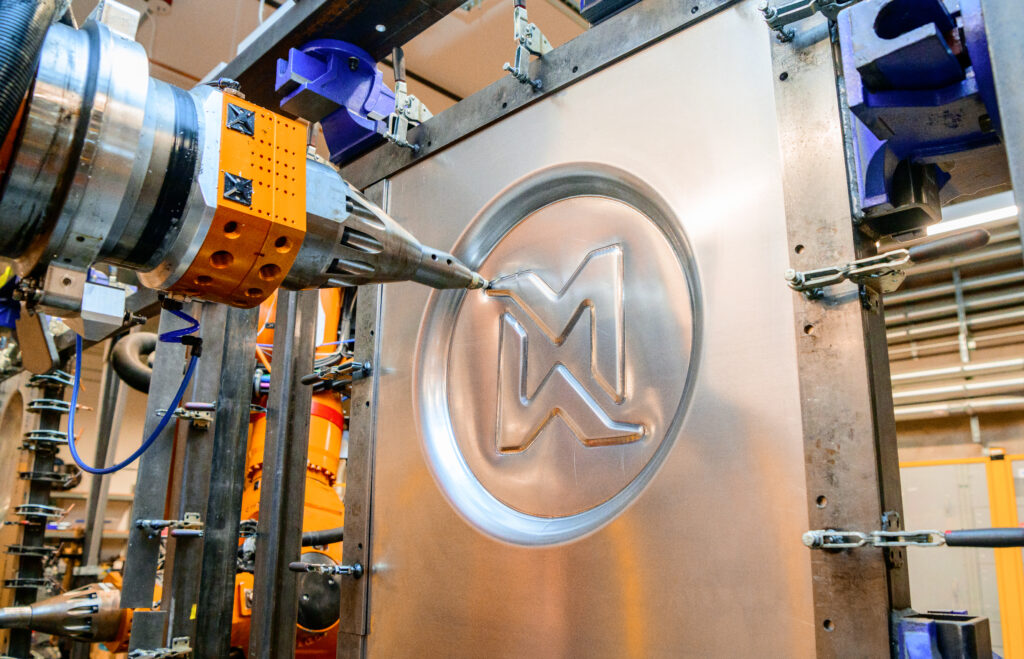Machina Labs, a robotic stamping company, has successfully secured a substantial $32 million in a Series B funding round, bringing its total funds raised to $45 million. This achievement comes at a notably challenging time, so kudos to them. Leading the charge in this round was NVIDIA’s NVentures, with support from Innovation Endeavors. The funds are slated for bolstering R&D and fostering business expansion.
“With their deep heritage in artificial intelligence and high-performance computing, we are looking forward to NVIDIA’s support as we further develop our AI and simulation capabilities,” said Machina Labs CEO Edward Mehr, “We are also thrilled to see our current partner Innovation Endeavors continue to support our vision. This Series B funding underscores the transformative potential of merging robotics and artificial intelligence. With this support, we are poised to develop the next generation of manufacturing floors; ones that can easily remake production with no hardware or tooling changes, but only requiring software modification.”
The concept of a toolless factory, championed by companies like Divergent Technologies, paints a compelling vision of an agile and fluid manufacturing environment. In this setting, the factory can seamlessly switch from making one product to another—perhaps cars in the morning and toys in the afternoon. This vision captures the imagination of many investors who often view traditional factories as efficient yet rigid, designed for high-volume production of specific items at a low cost.
In the case of Machina, this idea is further enhanced by the infusion of “software-ization,” where the company’s artificial intelligence and digital offerings promise to make the manufacturing process more flexible and digitally integrated. I find this fascinating, and in many ways, it feels like a refined articulation of the core promise of 3D printing. At a time when the only thing on the rise seems to be dough, a narrative like this can be incredibly potent.
“Over the past two years, Machina Labs has demonstrated the impact and scalability of combining robotics and AI in manufacturing,” said Innovation Endeavors Partner, Sam Smith-Eppsteiner. “We are thrilled to double down on our investment in Machina on the back of demonstrated execution, technology gains, and commercial traction. We expect Machina to play an important role in a number of key industrial trends of the next decade: domestic re-industrialization, defense innovation, electrification, and commercial space.”
Once again, the themes of domestic re-industrialization and defense surface, particularly in the context of U.S.-based companies. These topics appear to resonate strongly with investors.
“AI is rapidly accelerating industries across the global economy, including manufacturing. Machina Labs’s work to apply advanced computing and robotics to sheet-metal formation enables companies to operate manufacturing facilities with substantially improved efficiency and broadened capabilities,” Mohamed Siddeek, Corporate Vice President and Head of NVentures, stated.
Machina’s robotic forming process has the potential to serve a broad range of markets and applications. Not only does it compete with established industrial processes like stamping, but the company also doesn’t need to capture a large share of that market to succeed. Additionally, Machina aims to expand beyond its initial technology into other cell-based production methods. Divergent is on a similar path, offering a digital production system that utilizes robots in cells for toolless manufacturing.
I strongly recommend that others explore similar visions for their own technologies. The appeal of a turnkey, flexible digital manufacturing system could be far-reaching. For context, look no further than the tens of thousands of turbine blisks repaired using technologies like Optomec’s and other directed energy deposition methods, which integrate additive and subtractive processes within a single cell. Add a layer of artificial intelligence to that mix, and you’ve got a compelling proposition that could attract investment even in financially challenging times.
